What to Wear Opposite an Off White Dress
Previously on the Gentleman's Gazette, we discussed how to maximize the use of white in your wardrobe, particularly during the summer months. If you're still on the fence about trying white, the colors of off-white, cream, ivory or beige can be your gateway to lighter colors. They are also remarkably appropriate for all season wear.
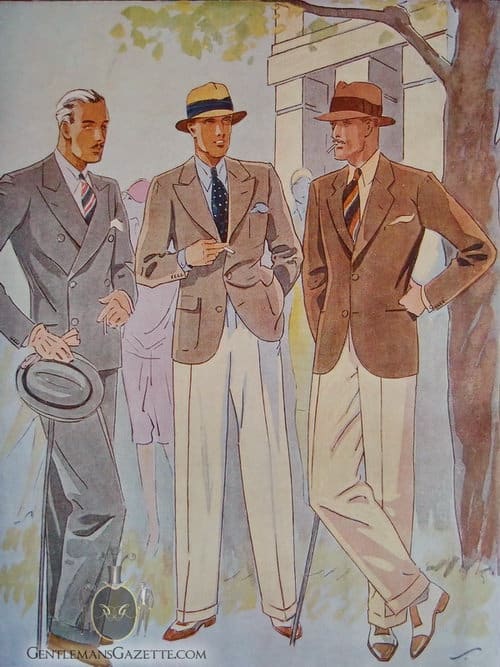
How to Wear Off-White
As a softer shade of white, off-white has the potential to be a part of every garment or accessory that you wear. Today, we will cover the different shades of off-white, why to add off-white into your outfits, and important considerations to make when wearing this versatile shade.
What Exactly is Off-White?
This sounds like an easy one to answer, but it's sort of a trick question because off-white comes in several flavors, including ivory, natural, stone, ecru, and cream, each with its own subtle tonal differences that affect how it coordinates with the rest of your (usually warm weather) outfits. So, what U.S. Supreme Court Justice Potter Stewart once said about obscenity–"I know it when I see it"–very much applies to the variants of off-white: hard to pin down but obvious on sight. For our purposes, we're talking about anything that falls between pure white and beige. Because the catch-all term is "off-white," white should always still be the primary hue. Ultimately, this means subtle hints of color in a largely white garment.

Within the terminology of off-white, "cream" indicates white with yellow undertones as does "ivory," while "natural" is applied to garments that border on beige (because they contain a bit of brown) but don't quite get there. Meanwhile, "stone" signifies an off-white with some gray in it. The distinction is important because even though the neutrality of off-white allows it to coordinate with many different shades, the specific undertone determines which version of off-white you can pair with other items in your outfit.
Cream or Ivory
Because yellow works great with blue, cream does too. By extension, it pairs well with any other colors related to yellow, like tobacco brown, which is between brown and orange (remember orange is really red + yellow). Cream trousers would, therefore, pair with tobacco linen or mid-blue hopsack jackets. The opposite is rarer, as it's generally trickier to wear a lighter solid sport coat with darker pants, but you can do a cream jacket with navy pants, for example. Because they exude a yellow tone, cream may be the brightest and most summery of the off-white shades.
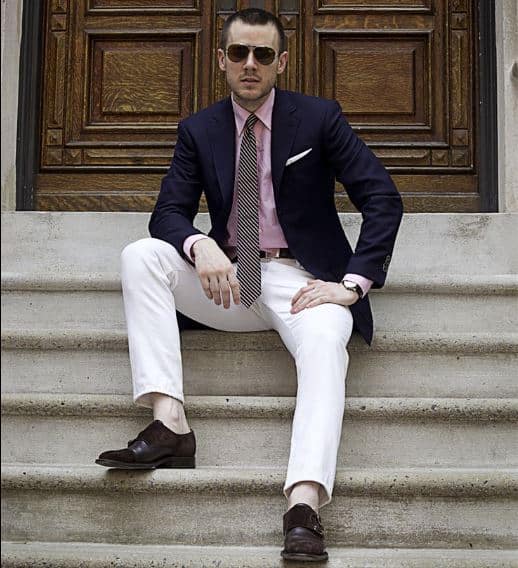
Stone
On the other hand, being white with gray undertones, stone is more reserved and therefore also pairs best with more drab hues like gray, brown or navy. As such, stone can see more extended use into spring or fall to brighten up these seasons, and, conversely, also when traditional cold weather colors are worn in the summer. If you want to do a version of the classic navy blazer with white pants but want to tone it down a little, stone trousers might be your best bet.
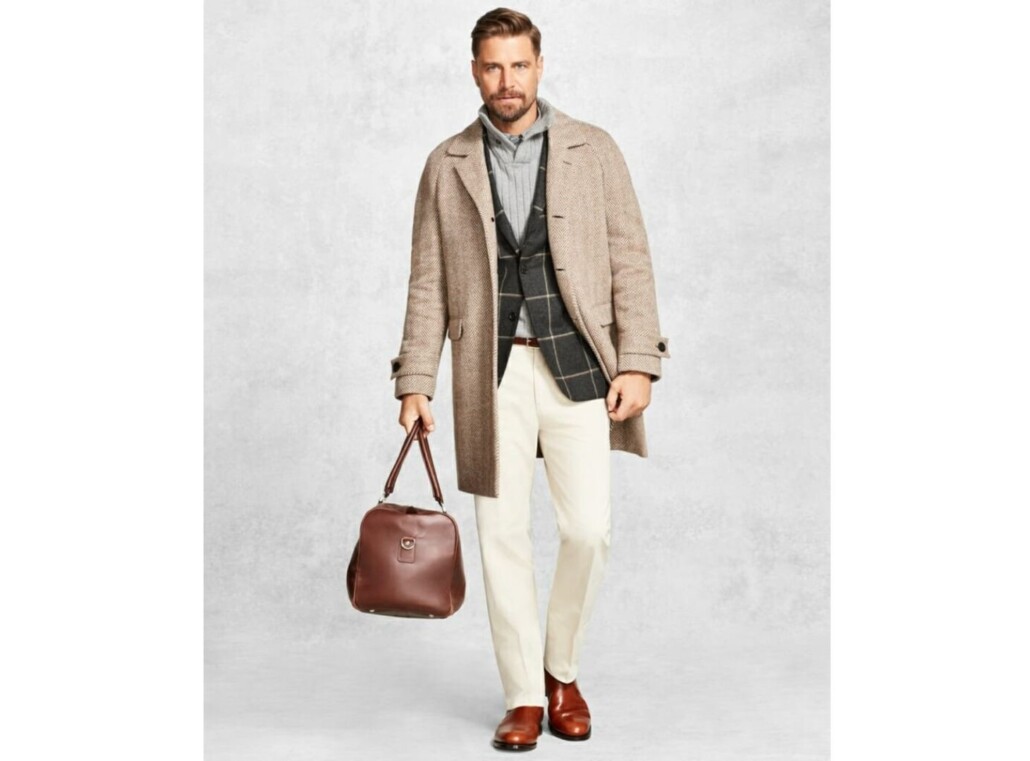
Natural
With its brown undertones, natural goes great with brown and things that brown would pair with like various blues such as sky blue or navy. A little darker and it will be beige, which probably makes it the most versatile of the off-whites.
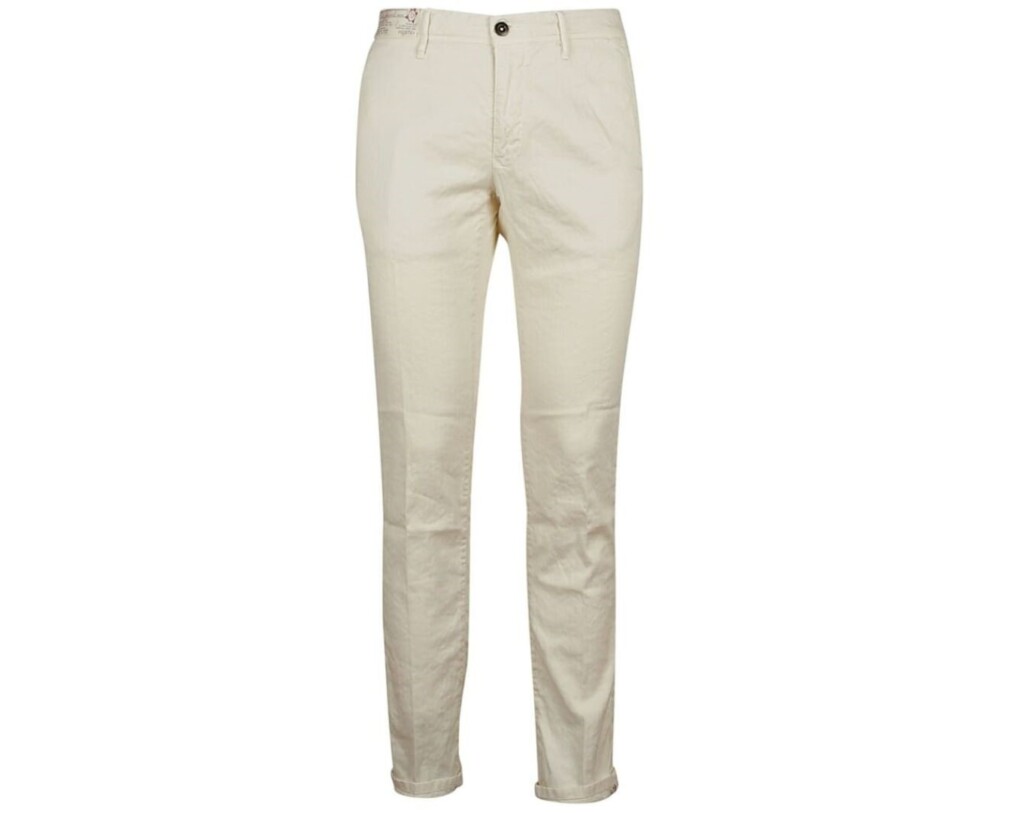
Sometimes, you need to have faith that the way a company or brand describes a color is true to a standard definition, and that may not be the case. I've seen some essentially off-white items called by the moniker "beige" and some items with a grayish cast called "cream." Further complicating matters, you can also find things labeled "sand," "light beige" or "light khaki." Off-white rarely photographs clearly, so if you look at an image of off-white trousers on your monitor, the exact character and tone will be difficult to discern, which may be true of the images in this article as well! You'll find yourself squinting and checking multiple devices to try to determine the exact color before buying. So, if you don't see it in person, be prepared for the possibility of a return.
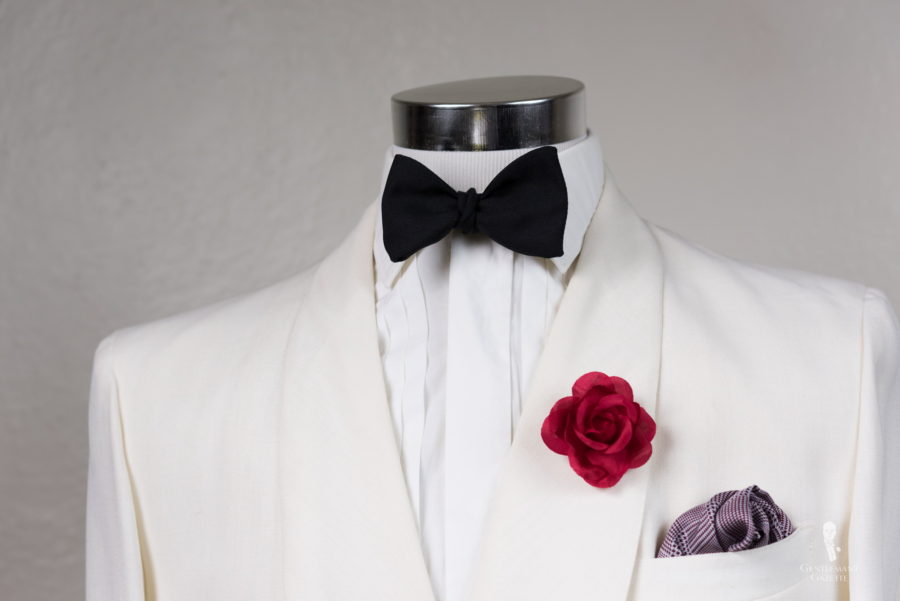
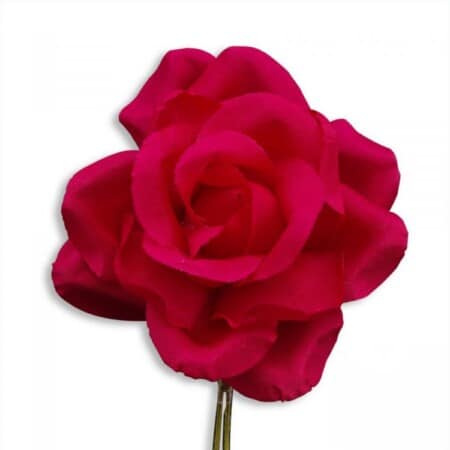
Fort Belvedere
Red Spray Rose Boutonniere Buttonhole Flower
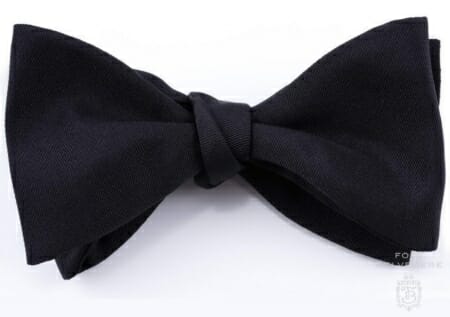
Fort Belvedere
Black Bow Tie in Silk Barathea Sized Butterfly Self Tie
In menswear parlance, when an item is described as white, it may also actually be an off-white, so if you're looking for the latter, don't rule out items listed as "white." The classic example is the "white" dinner jacket, which is always off-white, an obvious thing when you see it with a white shirt.
Why Wear Off-White?
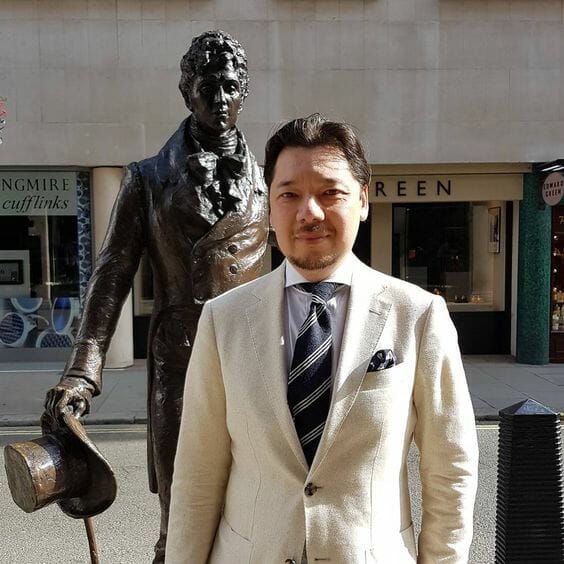
When we talk off-white, the most common articles of clothing that come to mind are first, pants, which are fairly common; and then jackets and suits; followed by shirts, which are generally rare.
1) It's "Safer" than White
Well, a little bit. Off-white is often the choice of men who find pure white to be too showy or bold. For these gents, wearing a more muted off-white would be more comfortable. Nowhere is this more apparent than with a suit, as more men will be willing to wear an off-white suit than one in pure white, and the latter would usually work better for most. White shirts may be one of the most common shirt colors, but it's also a stark color that doesn't always pair well with many skin tones.
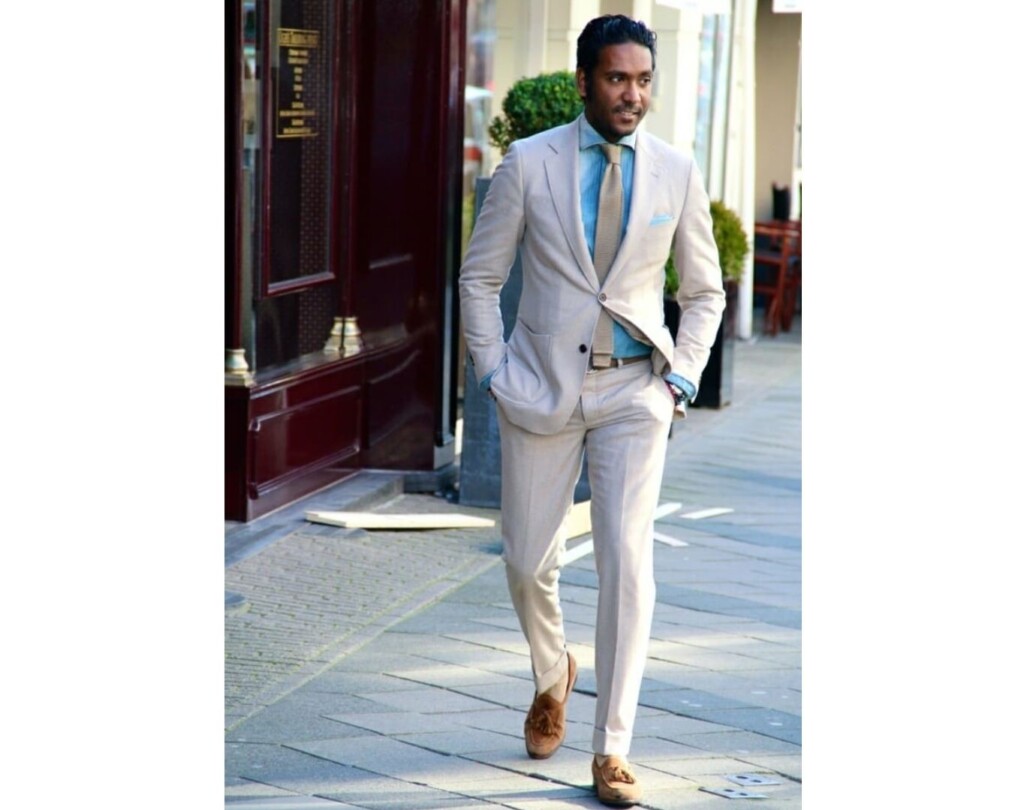
Off-white is also safer to wear than white because it requires less concern about keeping your clothes clean. Marks, scuffs, and small stains don't show as much on off-white pants or jackets, so you can worry less where you sit or what you brush up against. Off-white trousers and jackets also can have more flecks or texture to them than whiter whites, because it's not really possible to add these fabric elements to a garment while maintaining a pure white. The added textures, slubs or fibers are what helps to disguise dirt, so you don't need to give up on an item immediately if it has an irremovable mark. Off-whites do show more dirt than, say, navy blue or charcoal, but this is true of any light color.
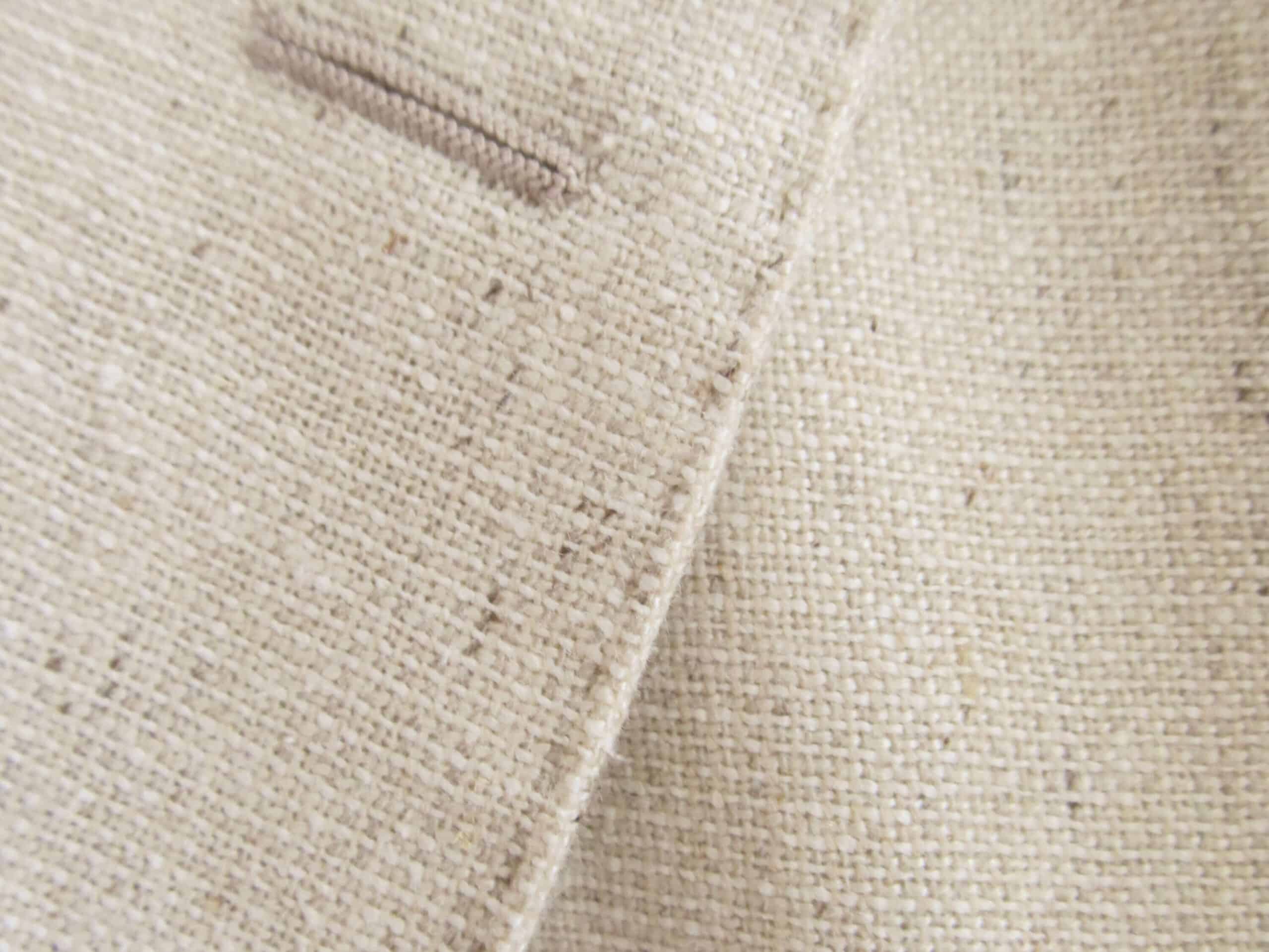
2) It Has More Opportunities for Wear
The fact that off-white is less bright than white is also a benefit in extending the use of garments into other seasons and weather conditions. A pure white is really only doable in warm sunny weather. When the temperature drops or when it's cloudy, off-white is the choice. After all, "winter white" is a form of off-white that makes it acceptable for cold weather. You can see this in the vintage apparel arts illustration that opened this article, where two of the gentlemen are wearing off-white flannel in different shades. And, as mentioned earlier, the gray aspect of "stone" makes it appropriate for seasons other than summer.
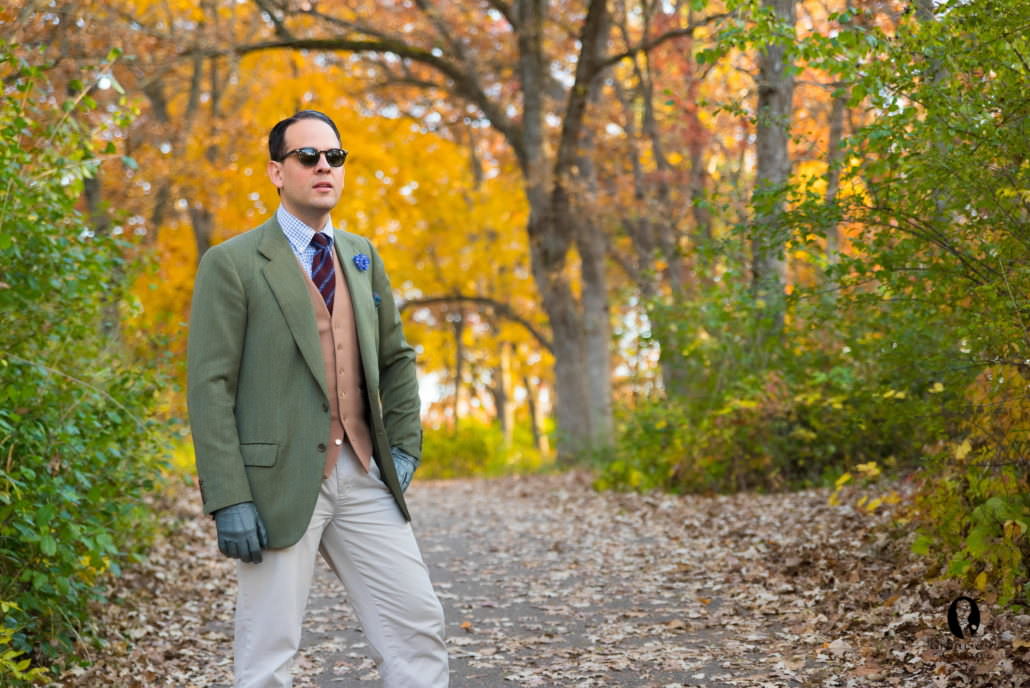
3) It's Not as Stark
The fact that off-white is less bright is also a selling point in a shirt if you wear brown or olive green jackets. While a crisp white shirt pops against a blue or gray jacket (both considered "cool" colors), it can look glaring under a warmer hue like brown. So, if you're wearing a brown flannel sport coat, for example, an off-white shirt would usually look more harmonious than bright white.
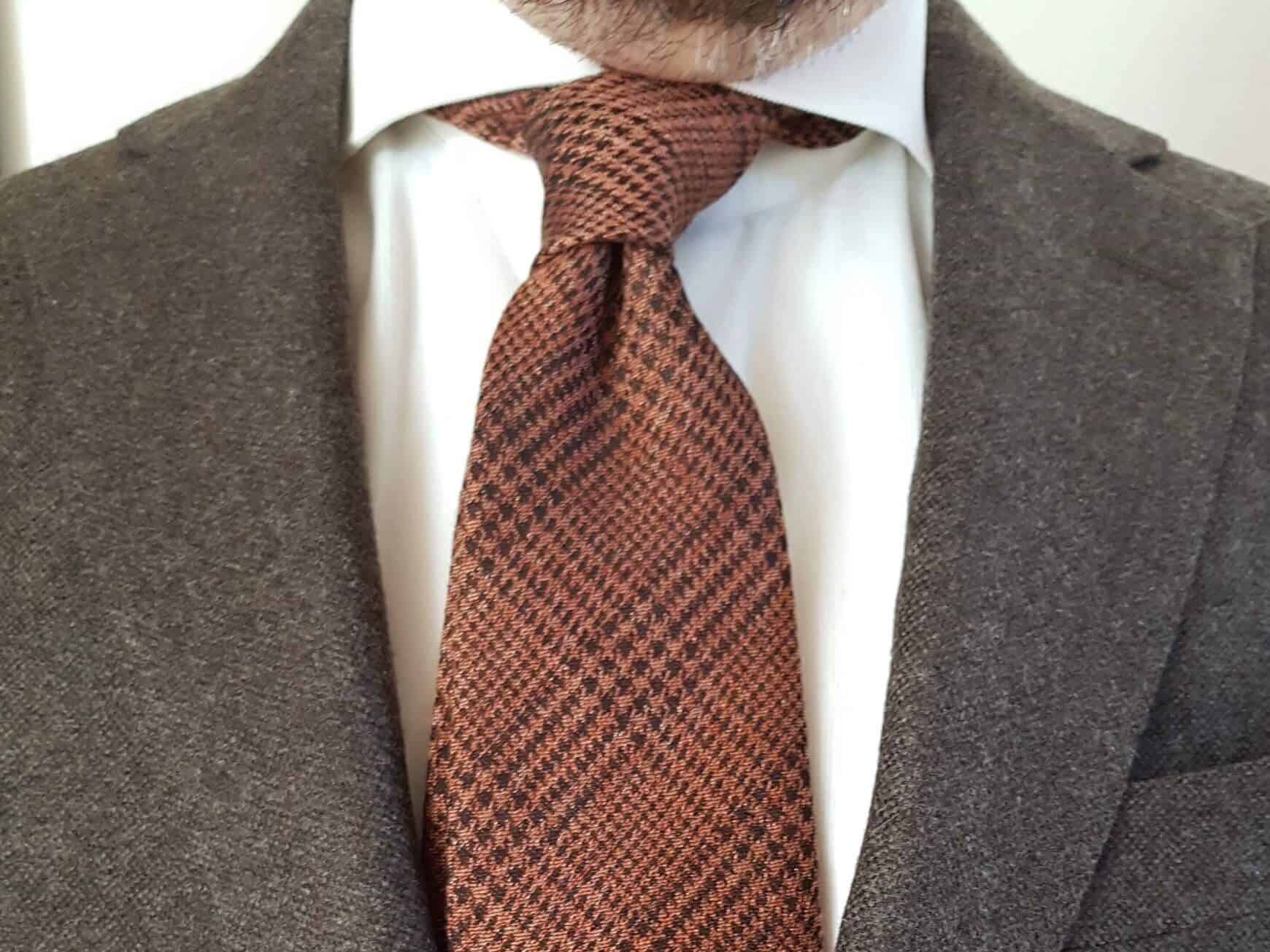
Interestingly, dress shirts are difficult to find off the rack. which is a shame because they do fill an important style niche. Off-the-rack, the selection is limited if you want something better than a cheap non-ironing version. Even custom shirt makers seem to have a small selection of options–one fabric choice, one tone of off-white–probably because the color is underappreciated or is associated with fashion in the 1990s when it seemed more widely available. This is a situation that should be remedied. Yes, you wouldn't wear an off-white shirt as often, but for the true style aficionado, it's as necessary as having a pink shirt or one with colored stripes.
Considerations When Wearing Off-White
1) Make Sure to Create Enough Contrast
As with any color, off-white can't be worn indiscriminately. The most important consideration is to create sufficient contrast or separation between off-white and anything white that you are wearing. If you wear a cream jacket, for example, you want to make sure it's differentiated from your shirt. This tends to be more of an issue when wearing off-white pants with a white shirt. White pants and a white shirt can work together if your pants are truly white (sometimes called "optic white"), but if your pants are off-white, your top and bottom look similar but different enough in tone that the combination seems "off." This is similar to wearing a maroon vest with burgundy pants or a burnt solid orange tie with rust pants; the eye immediately notices that the shades are similar but inexact, so there's a sense of disharmony. If you wear a solid white shirt, the solution is to get off-white trousers that are clearly not white; the difference should be plain. Another option is to wear your shirt in a different color, like light blue.
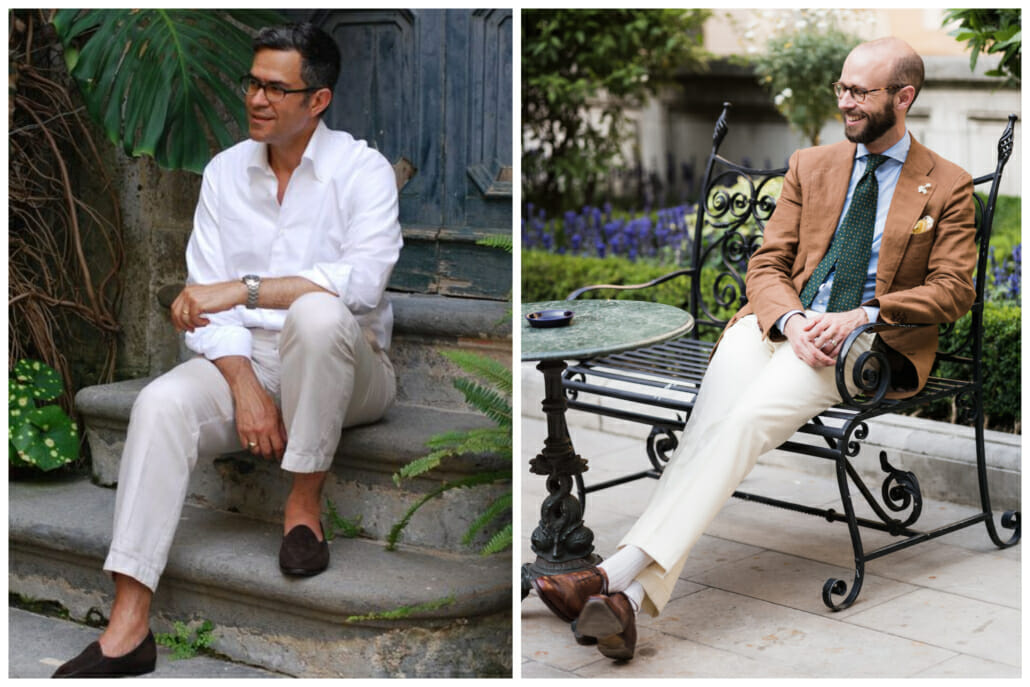
2) Make Sure Off-White Pants Have Enough Substance
One potential problem with off-white trousers is that they can look washed out or bland with the rest of your outfit. White never really has that problem because it is naturally so bright. Off-white pants, on the other hand, can recede back more in some cases, and when this happens wearing them becomes the sartorial equivalent of painting all the rooms in your house in beige–innocuous and rather bland. And, if your pants are washed out, the effect is that your outfit as a whole looks unbalanced as if your upper body is sort of separated from your legs.
Whether this happens also depends on what you wear on top. If your jacket, shirt, and tie include strong patterns or colors or are made from weightier fabrics, off-white pants will tend to fade back, leading your outfit to look unbalanced or top heavy. The obvious solution is to ground the outfit and balance the outfit by using a darker color for the pants, which would mean moving more toward beige if we're staying in the same tonal range. But, if we're sticking with off-white trousers, a thicker, richer fabric (like a cream cotton twill or wool flannel instead of a lightweight chino) would do the trick.
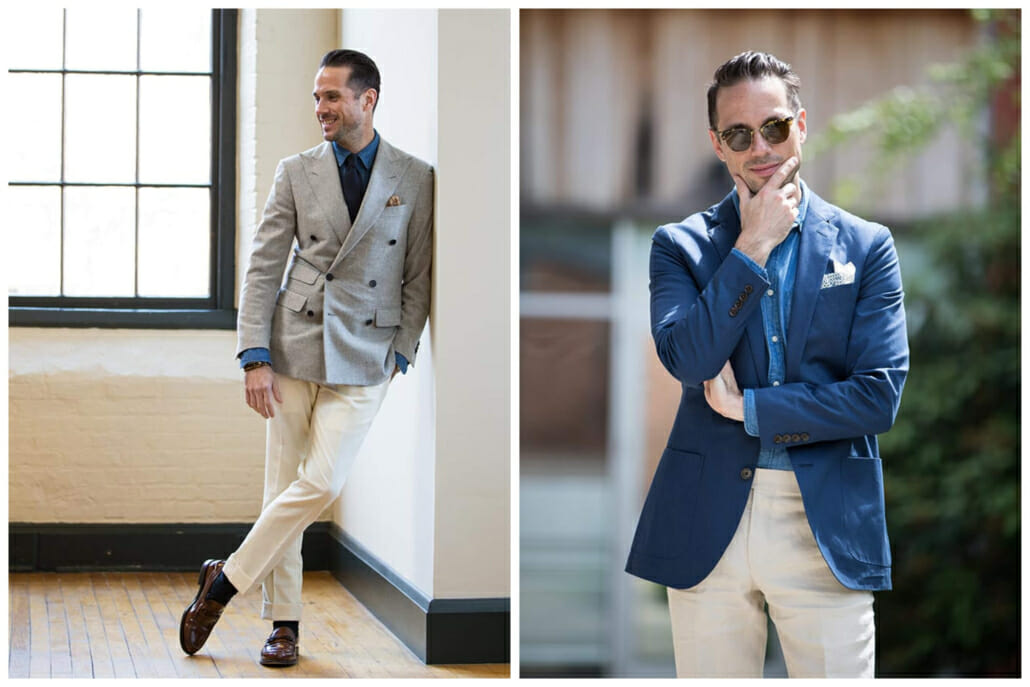
Conclusion
Beige has long been a popular color in menswear, especially in the United States, where it forms the bottom part of the preppy uniform alongside a navy blazer. Its close cousin off-white is underutilized in comparison, though it is quite versatile and sometimes more useful than white. It has the potential to fade back in some cases, but if you choose the right shade of off-white, you can pair it with all the staple colors of menswear, including brown, gray and blue, and definitely with any brown dress shoe. As such, off-white deserves an important place in every man's wardrobe.
Do you like off-white dress shirts? Would you wear an off-white suit or jacket or do you stick with off-white pants? Let us know in the comments section.
Source: https://www.gentlemansgazette.com/how-wear-off-white/
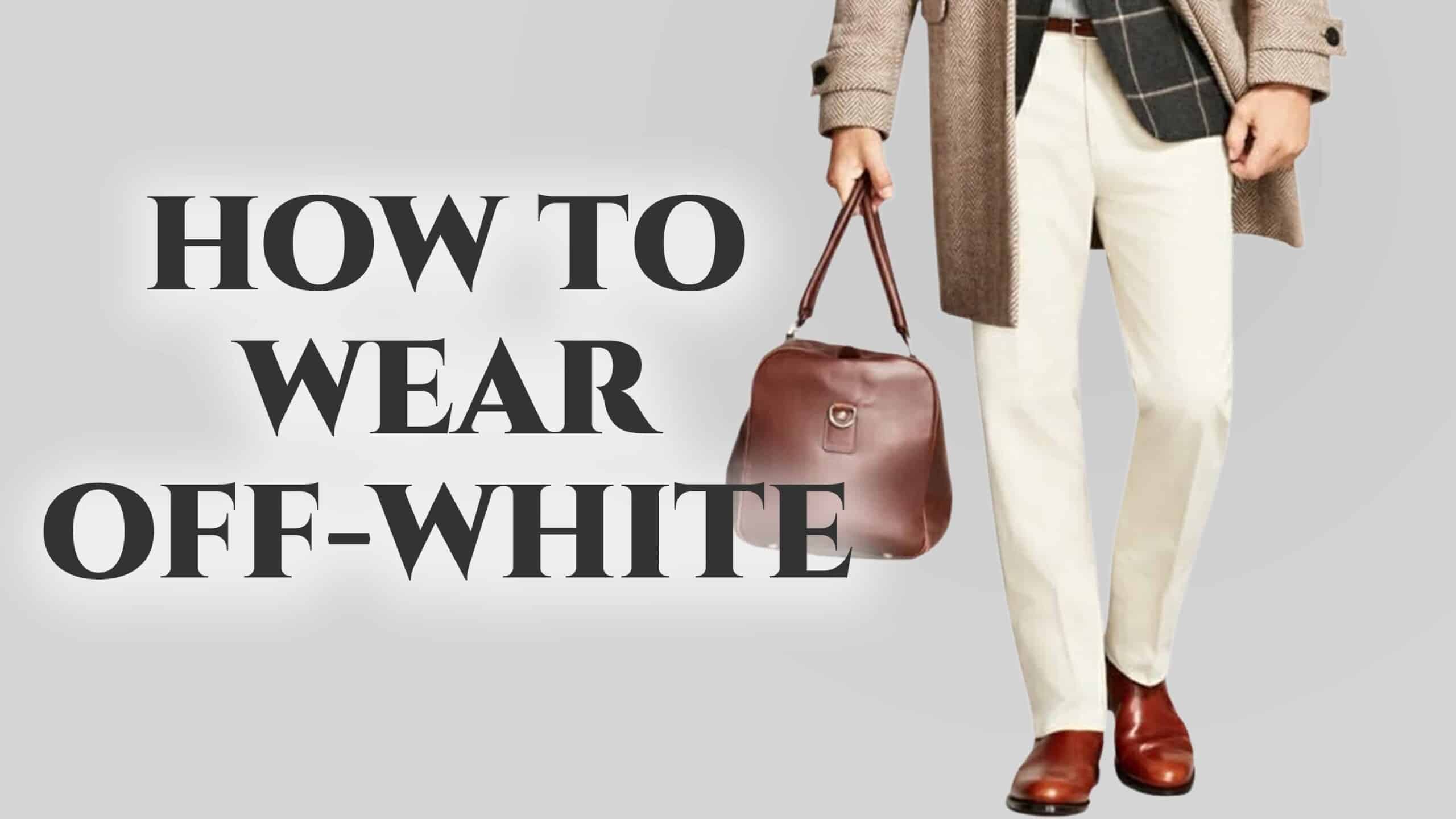
0 Response to "What to Wear Opposite an Off White Dress"
Post a Comment